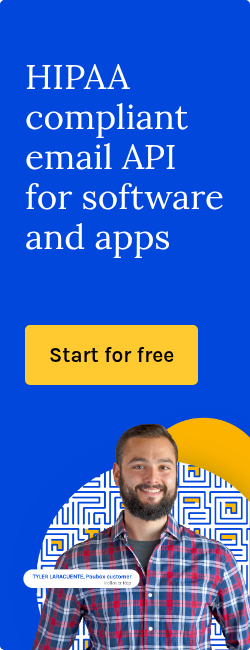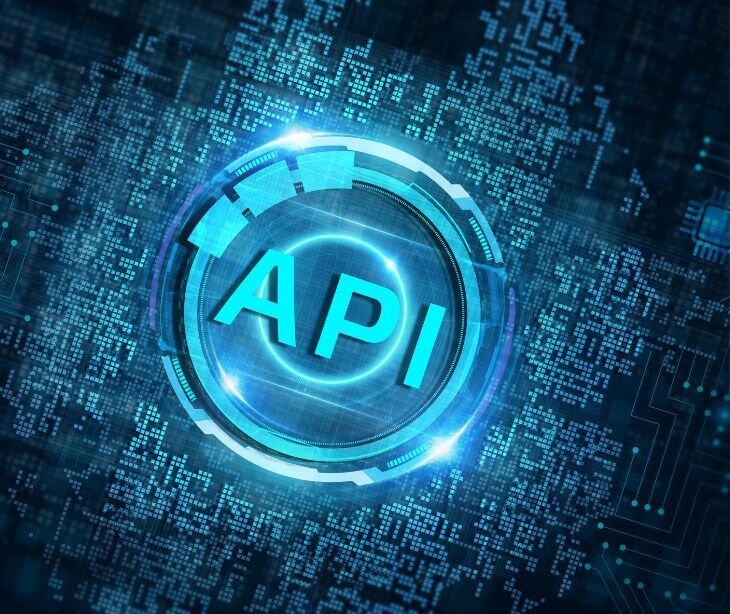
APIs hold the key to unlocking the full potential of digital health technologies by enabling a more connected, efficient, and patient-centered healthcare system, making them a superior choice to traditional patient portals.
What are API’s?
According to a recent study, APIs have been recognized for their potential to enhance healthcare delivery. Since APIs serve as the conduits through which Electronic Health Information (EHI) is transmitted, they are required to meet the standards set by HIPAA. By providing a standardized method for data exchange, APIs support healthcare providers, payers, and technology vendors in implementing robust access controls, encryption, and auditing mechanisms.
How APIs work
APIs operate by establishing a set of rules and protocols that allow different software applications to communicate with each other. When a software application requests an API, it sends a structured request via a defined endpoint using HTTP methods such as GET, POST, PUT, or DELETE.
This request includes specific parameters or body content that the API needs to process the request. The API, hosted on a server, receives this request and interprets it according to its programming. It then performs the necessary actions, such as retrieving data from a database, modifying data, or executing a function.
After completing the requested action, the API packages the response in a standardized format, typically JSON or XML, and sends it back to the requesting application over the HTTP protocol. The application can then process or display this response. Throughout this process, APIs handle authentication and authorization to ensure secure access to resources, often using tokens or API keys to verify the identity of the requestor and ensure that they have permission to access the requested data or perform the requested operation.
See also: The 5-minute guide to Paubox Email API
The uses of APIs in healthcare
APIs have a broad range of uses in healthcare, streamlining operations, improving patient care, and enhancing data interoperability among various healthcare systems. Here are some key uses of APIs in the healthcare sector:
- EHR integration
- Patient data access
- Telehealth services
- Wearable health devices
- Payment processing
- Appointment scheduling
- Prescription management
- Lab results access
- Clinical decision support
- Health information exchange (HIE)
- Public health reporting and surveillance
- Personal health record (PHR) systems
- Research and data analysis
- Interoperability and data standards implementation
The limitations of portals
The main limitation of portals, as mentioned in the 2017-18 Health Information National Trends Survey 5, cycles 1 and 2, is the low level of access and use among certain demographic groups. Specifically, individuals without a regular doctor or health insurance, those with only high school or vocational/some college education, and those with limited English proficiency are less likely to report accessing their medical records through patient portals.
This discrepancy indicates a digital divide, where patient portals, despite their potential to improve healthcare delivery and patient engagement, are not being utilized uniformly across all segments of the population. The study suggests that barriers such as lack of awareness, limited internet access, and concerns about data security may contribute to these disparities.
See also: The challenges of navigating portals for patients
The reason why APIs are better than portals
APIs outperform patient portals in healthcare by offering unparalleled flexibility, scalability, and the ability to streamline complex data integrations across diverse healthcare ecosystems. While patient portals serve as interactive platforms for patients to view their health records, schedule appointments, and communicate with healthcare providers, they are often limited by their standalone nature and user interface constraints.
An example of how APIs benefit communication is the fact that they easily integrate into common communication methods. Through APIs, HIPAA compliant email services can connect with a healthcare provider's existing email system, allowing for the secure and efficient exchange of PHI within the familiar interface of their current email platform. This integration facilitates easy access to secure email features directly from the provider's existing email account, eliminating the need to switch between different applications or platforms for HIPAA-compliant communications.
See also: Top 10 HIPAA compliant email services
FAQs
What are the benefits of using APIs over portals for healthcare data exchange?
APIs offer enhanced interoperability, real-time data sharing, and the ability to integrate with multiple systems and applications, improving healthcare delivery and patient care outcomes.
How can healthcare organizations transition from patient portals to API-based systems?
Healthcare organizations can transition from patient portals to API-based systems by developing a strategic plan that includes assessing current IT infrastructure, training staff on API technologies, and gradually integrating APIs to connect with existing and new healthcare applications.
What are the main differences between APIs and patient portals in healthcare?
The main differences between APIs and patient portals in healthcare are that APIs facilitate backend data exchange and integration between systems, whereas patient portals are front-end interfaces designed for direct patient access and interaction with their health information.
Subscribe to Paubox Weekly
Every Friday we'll bring you the most important news from Paubox. Our aim is to make you smarter, faster.




